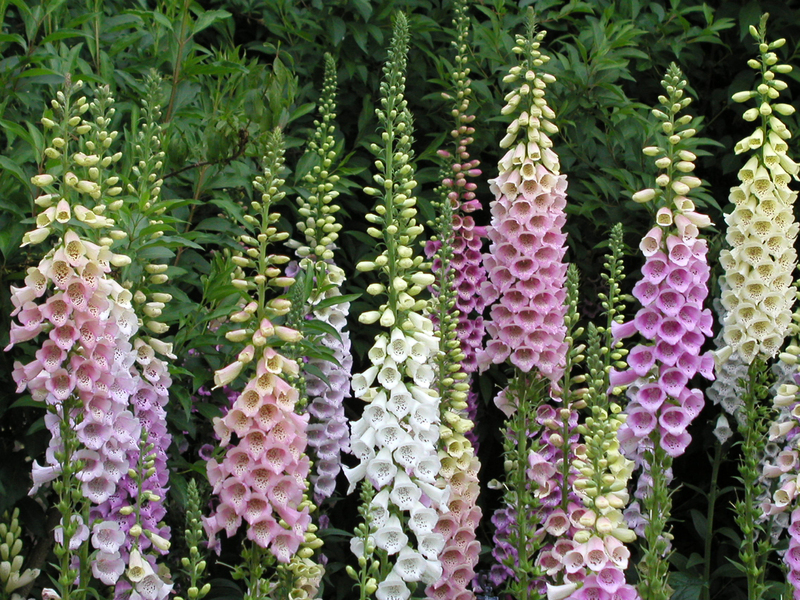Gardening Made Easy: Tools Every Enthusiast Should Own
Posted on 05/09/2025
Gardening Made Easy: Tools Every Enthusiast Should Own
Gardening is more than just a relaxing hobby--it's a rewarding way to connect with nature, improve your environment, and even grow your own food. Yet even the most passionate beginners can feel overwhelmed by the sheer volume of gardening equipment available on the market. If you've ever wondered which garden tools are essential and which are simply nice-to-have, you're in the right place. This comprehensive guide will help you understand exactly what you need to make your gardening experience both easy and enjoyable.
Why the Right Gardening Tools Matter
Equipping yourself with the proper gardening tools doesn't just make your work more efficient--it can transform your entire gardening experience. With the right instruments in hand, you'll be able to:
- Work faster and more comfortably
- Reduce the risk of injury
- Achieve better results with less effort
- Ensure a more productive and healthy garden
Whether you're a novice or seasoned green thumb, a solid arsenal of tools is the secret to successful gardening.

Essential Gardening Tools Every Enthusiast Must Own
Below, we've compiled a list of must-have gardening tools that will make your gardening tasks simpler, more efficient, and more enjoyable.
1. Hand Trowel
The hand trowel is a small, handheld tool frequently used for digging, planting, and moving soil or plants around your garden. It's perfect for tasks that require precision, such as transplanting seedlings or bulbs.
- Tip: Look for a hand trowel with an ergonomic, non-slip grip for comfort and ease of use.
- Uses: Digging holes, mixing soil, uprooting weeds, transplanting seedlings.
2. Pruning Shears (Secateurs)
Pruning shears, also known as secateurs, are vital for trimming and shaping plants. They allow you to easily snip away dead or overgrown branches, helping your plants grow healthier and more aesthetically pleasing.
- Consider bypass pruners for live wood and anvil pruners for dead wood.
- Maintenance tip: Regularly oil and sharpen your blades to keep them in peak condition.
3. Garden Gloves
Garden gloves are an absolute must for protecting your hands. Whether you're handling thorny branches, pulling up weeds, or simply digging in the dirt, gloves help prevent blisters, cuts, and exposure to chemicals.
- Types: Nitrile gloves for light work, leather gloves for heavy-duty tasks.
- Make sure they fit snugly and are made of breathable material.
4. Garden Fork
A garden fork is excellent for loosening, lifting, and turning over soil. Its strong, pointed tines can easily break up compacted soil, making it easier to plant and aerate your garden beds.
- Use for digging up root crops or pulling weeds from tough soil.
- Look for stainless steel forks for durability and rust resistance.
5. Spade or Shovel
No gardening kit is complete without a good spade or shovel. Choose a straight-edged spade for cutting soil and digging holes, and a rounded shovel for scooping and moving soil, compost, or mulch.
- Full-size tools are better for large gardens, while smaller gardens may only require a hand shovel.
- Tip: Invest in a fiberglass or hardwood handle for strength and longevity.
6. Watering Can or Hose
Proper watering is crucial for a thriving garden. A sturdy watering can is perfect for potted plants and delicate seedlings, while a garden hose with an adjustable spray head is better for lawns and larger beds.
- Consider a watering wand for hard-to-reach spots.
- Choose a lightweight watering can for easy handling.
7. Rake
Rakes come in different styles--leaf rakes for gathering leaves and debris, and garden rakes for leveling soil and breaking up clumps. Both are indispensable for maintaining a tidy and healthy garden.
- Look for a rake with a strong handle for more control and comfort.
- Wide, flexible tines make leaf rakes more efficient for collecting debris.
8. Hoe
The hoe is ideal for clearing weeds, shaping soil, and making planting rows. It's an age-old tool that remains essential for manual weed control and soil preparation.
- Draw hoes are perfect for creating trenches, while stirrup hoes excel at cutting weeds at the root.
- Tip: Keep the blade sharp for the best performance.
9. Wheelbarrow or Garden Cart
A wheelbarrow or garden cart simplifies hauling soil, compost, plants, and garden tools around your yard. Choose one with a sturdy frame and pneumatic tires for extra stability.
- Foldable versions save space for small gardens.
- Tip: Clean your wheelbarrow regularly to prevent rust and buildup.
10. Garden Kneeler or Pad
Knee pain shouldn't stop you from gardening! A garden kneeler or pad provides a cushion for your knees and can often double as a seat, helping you work on low beds in comfort.
- Some options include handles for easy standing up.
- Look for waterproof materials for durability and easy cleaning.
Specialty Gardening Tools for the Enthusiast
Once you've mastered the basics, consider adding these advanced gardening tools to your collection to tackle specialized tasks and achieve professional results.
1. Loppers
For thicker branches that pruners can't handle, loppers provide the extra leverage you need. These long-handled cutting tools are perfect for shaping shrubs and small trees.
2. Soil Test Kit
To grow the healthiest plants, it helps to know your garden's soil composition. Soil test kits reveal critical data about pH, nutrient levels, and more, letting you tailor your fertilization strategies.
3. Dibber or Bulb Planter
These handy tools are designed for creating evenly spaced holes for seeds, bulbs, and seedlings. A dibber is a pointed stick, while a bulb planter extracts plugs of soil for precise planting.
4. Garden Sprayer
For applying fertilizers, pesticides, or foliar feeds, a garden sprayer allows for direct and even coverage. Choose manual pump varieties for small jobs, or backpack sprayers for larger plots.
How to Choose the Best Gardening Tools
With so many options, it's tempting to buy the first tool you see. However, investing a bit of time in choosing the right equipment pays off in the long run. Here's what to consider:
- Material Quality: Stainless steel or carbon steel lasts longer and resists rust.
- Comfort: Ergonomic, cushioned handles reduce hand fatigue and prevent injuries.
- Purpose: Choose tools designed for the specific plants and tasks in your garden.
- Weight: Lightweight tools are easier to handle, especially for seniors or those with limited mobility.
- Cost vs. Value: High-quality tools are an investment but save money through durability and efficiency.
Maintaining Your Gardening Equipment
Even the best garden tools need regular care. Here's how to keep your favorite equipment in top shape year after year:
- Clean tools after each use, removing soil and sap.
- Sharpen blades consistently (at least twice a season for cutters).
- Oil metal parts to prevent rust.
- Store tools in a dry place, preferably hung up or organized in a shed or toolbox.
- Inspect wooden handles for splinters and apply linseed oil to keep them smooth and strong.
Proper maintenance ensures your gardening essentials remain safe, effective, and comfortable to use.
Gardening Tool Safety: Tips for Injury-Free Gardening
Safety is as important as efficiency when it comes to gardening tools. Protect yourself and your loved ones by following these guidelines:
- Always wear gloves, long sleeves, and closed-toe shoes.
- Keep blades and cutting edges sharp--a sharp tool is safer than a dull one.
- Be mindful of your posture; bend at the knees to avoid back strain.
- Keep tools away from children and pets.
- Don't leave tools lying in the grass or garden pathways.
Time-Saving Tips: Making Gardening Even Easier
Want to simplify your gardening process even further? Here are some expert tips for maximizing efficiency:
- Organize tools using a wall rack, bucket, or apron with pockets so everything's within reach.
- Spot-weed regularly to prevent infestations that require bigger cleanups.
- Mulch garden beds to reduce the need for constant watering and weeding.
- Label your tools with bright tape or paint so you can spot them easily in the garden.
- Choose multi-purpose tools when possible--combo tools save storage space and money!

Frequently Asked Questions About Gardening Tools
Q1: How do I start a tool collection as a gardening beginner?
A: Start with the basics: hand trowel, pruning shears, garden gloves, spade, and watering can. As your garden grows, invest in additional tools tailored to your specific needs and gardening style.
Q2: How often should I replace my garden tools?
A: High-quality garden tools can last many years if properly maintained. Replace them if you notice significant rust, cracks in handles, or if they become unsafe to use.
Q3: Is it better to buy gardening tool sets or individual tools?
A: Tool sets can be cost-effective for beginners, but evaluating individual tools allows you to prioritize quality and fit your specific requirements.
Conclusion: Make Gardening Easy with the Right Tools
Gardening made easy truly begins with equipping yourself with the essential tools. Quality gardening equipment not only boosts efficiency but also nurtures a safer, more enjoyable gardening experience. Whether you're potting your first seedling or tending a vast backyard plot, the right gardening tools pave the way for beautiful blooms, bountiful harvests, and endless satisfaction. Ready to dig in? Assemble your tool kit, and watch your garden flourish!
Share your favorite gardening tools and tips in the comments below. Happy gardening!

